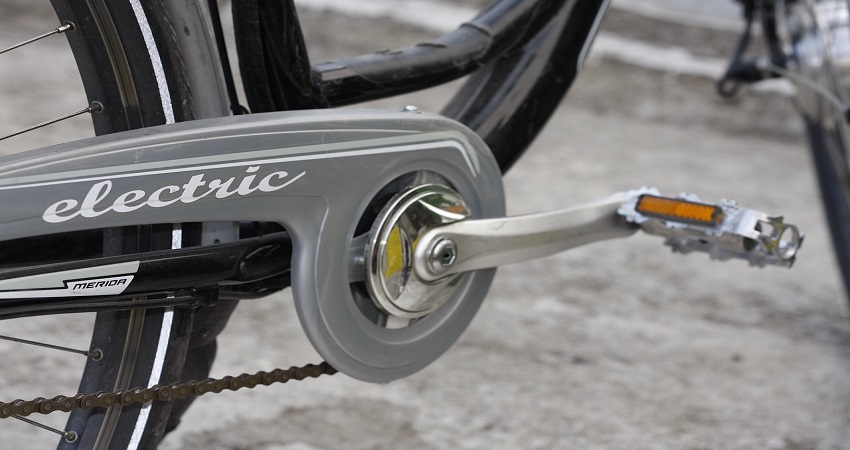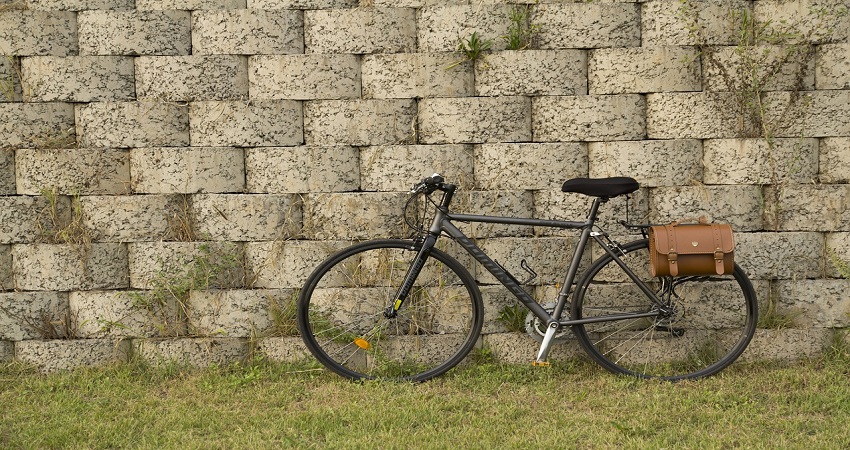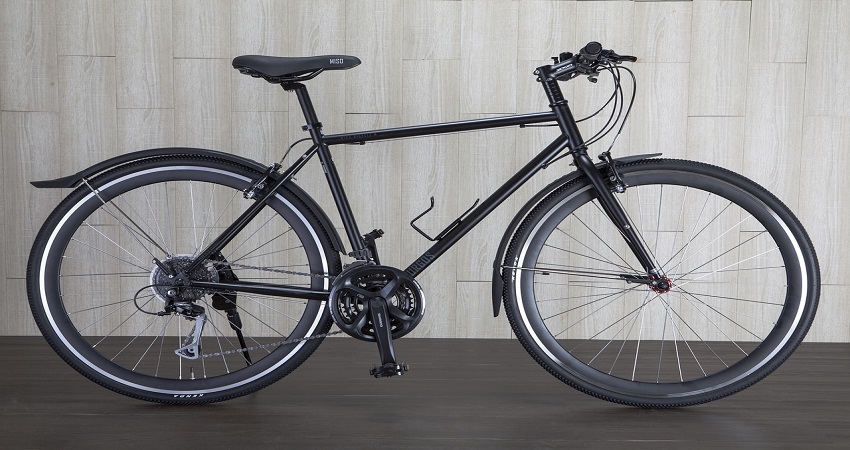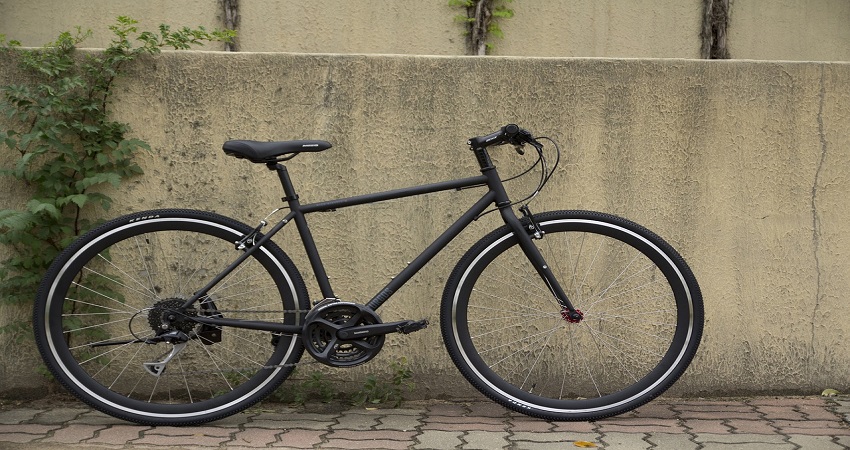A hybrid bike usually has seven or eight gears. The number of gears can vary based on the bike model.
Hybrid bikes have become increasingly popular due to their versatility and comfort. They are designed to provide a blend of features from both road and mountain bikes, making them suitable for various terrains and riding styles.
With upright handlebars, wider tires, and a range of gear options, hybrid bikes offer a smooth and efficient ride for commuters, recreational cyclists, and fitness enthusiasts alike.
The gears on a hybrid bike allow riders to easily adjust their speed and effort, making them ideal for navigating city streets, bike paths, and even light trails.
Whether you’re a beginner looking for a comfortable ride or a seasoned cyclist seeking a practical and reliable mode of transportation, a hybrid bike with its seven or eight gears can provide an enjoyable and adaptable riding experience.
History Of Hybrid Bikes
Hybrid bikes have a fascinating history that has evolved from traditional models, offering a unique blend of features from mountain and road bikes. Let’s take a closer look at the evolution from traditional bikes.
Evolution From Traditional Bikes
Initially, hybrid bikes emerged as a response to the limitations of traditional road and mountain bikes. The need for a versatile bicycle that could handle both urban commutes and off-road trails prompted the development of hybrid models.
This new breed of bikes aimed to combine the speed and agility of road bikes with the durability and versatility of mountain bikes, resulting in the birth of the hybrid bike.
This evolution brought about a shift in gear systems, with hybrid bikes incorporating a specific number of gears to cater to varying terrains and riding styles. Understanding the gear configurations of hybrid bikes is essential in maximizing performance and comfort.
Exploring Gear Systems
In the world of hybrid bikes, gear systems play a crucial role in providing riders with the versatility they need to tackle various terrains. Whether you’re commuting to work, touring the countryside, or enjoying a leisurely ride, having the right gear setup can make all the difference in your cycling experience.
In this article, we’ll dive into the different gear options available for hybrid bikes, with a particular focus on internal gears vs. external gears.
Internal Gears Vs. External Gears
When it comes to hybrid bikes, there are two main types of gear systems: internal gears and external gears.
Internal gears are hidden within the bike’s hub, offering a clean and low-maintenance setup. These gears are enclosed in a protective casing, making them less vulnerable to damage from the elements. They are also less exposed to debris, reducing the chances of gear malfunctions. Hybrid bikes with internal gears usually come in three-speed varieties, providing a decent range for everyday use. Some models may offer five- or seven-speed options for those seeking more gearing choices.
External gears, on the other hand, are located externally on the bike’s derailleur system. They are more commonly seen on mountain bikes and road bikes but are also available on hybrid models. These gears consist of multiple cogs and a chain that moves between them when you shift gears. Hybrid bikes with external gears typically offer a wider range of speeds compared to internal gears, allowing riders to conquer steeper inclines and reach higher speeds on straightaways.
Gearing Options Available For Hybrid Bikes
When it comes to selecting the right gear setup for your hybrid bike, it ultimately comes down to personal preference and the type of riding you plan to do. Here are some common gearing options available:
- Single-speed hybrid bikes: These bikes come with a single gear, making them lightweight and extremely low-maintenance. They are suitable for flat terrains and riders who prioritize simplicity.
- Three-speed internal gears: A reliable choice for casual riders and urban commuters, offering a decent range for various terrain types.
- Five to seven-speed internal gears: Hybrid bikes equipped with these gears provide more flexibility for tackling hilly terrains and longer rides.
- External gears with multiple cogs: Hybrid bikes with external gearing systems usually offer a wide range of speeds, making them suitable for riders who enjoy a mix of flat and hilly terrains.
Ultimately, the gear system you choose should align with your riding style, fitness level, and the type of terrain you’ll encounter on your journeys. It’s always recommended to test ride different gear setups and consult with a knowledgeable bike professional to find the perfect configuration for your hybrid bike.
Understanding Hybrid Bike Gears
Hybrid bikes typically have a range of gears, usually seven or eight, to provide a usable gear range for various terrains. However, some hybrids may have as few as six gears or even just a single gear for maximum simplicity.
Common Number Of Gears In Hybrid Bikes
Hybrid bikes usually come with a variety of gear options to cater to different riding preferences and terrain conditions. The most common number of gears in hybrid bikes is seven or eight. Some hybrid bikes may even have six gears, while others may have up to eleven gears for a wider gear range. However, it is essential to note that there are also hybrid bikes available with a single gear, which provides maximum simplicity.
Role Of Gears In Different Riding Conditions
Having multiple gears on a hybrid bike allows riders to easily adapt to various riding conditions. Different gear combinations enable riders to tackle different terrains, such as steep hills, flat roads, or muddy trails. The gears on a hybrid bike provide options for both comfortable cruising and quick acceleration.
When riding uphill, switching to a lower gear makes pedaling easier by reducing the resistance. This allows riders to maintain a good cadence and prevent exhaustion. On the other hand, when riding on flat or downhill terrains, shifting to a higher gear increases speed and efficiency.
Moreover, gears also play a crucial role in improving the overall efficiency of the bicycle. By using the appropriate gear ratio, riders can optimize their pedaling power and conserve energy while riding. This is especially beneficial during long rides or when commuting in varying riding conditions.
Benefits Of Multiple Gears
Hybrid bikes typically come with multiple gears, offering various benefits that make them suitable for different terrains and riding styles.
Enhanced Versatility
The presence of multiple gears on a hybrid bike enhances its versatility, allowing riders to adapt to changing terrain and conditions. With a wide range of gear options, hybrid bikes provide the flexibility to tackle steep inclines, flat roads, or challenging off-road trails. This versatility makes them suitable for urban commuting, leisurely rides, and adventurous off-road excursions.
Improved Performance And Efficiency
Having multiple gears on a hybrid bike enhances its overall performance and efficiency. By adjusting the gear ratios, riders can maintain an optimal cadence while pedaling, resulting in improved speed and reduced fatigue. The ability to shift between gears smoothly ensures that riders can handle varying inclines and speeds with minimal effort, contributing to a more enjoyable and efficient riding experience.
Optimizing Gear Selection
Optimizing gear selection on a hybrid bike is crucial to ensure a smooth and efficient ride. By understanding how many gears a hybrid bike typically has and adapting gear selection to different terrains, riders can enhance their cycling experience.
Tips For Shifting Gears Correctly
When shifting gears on a hybrid bike, it is important to anticipate the terrain changes and adjust accordingly. Avoid cross-chaining to prevent excess wear on the drivetrain. Shift one gear at a time to maintain a steady cadence and prevent chain misalignment. Practice shifting in various conditions to get a feel for the optimal gear ratios.
Adapting Gear Selection To Terrain
For uphill climbs, shift to a lower gear to maintain a comfortable pedaling cadence. Use a higher gear on flat roads or descents to maximize speed. Experiment with different gear combinations to find the most efficient setup for various types of terrain.
Maintenance And Upkeep
Importance Of Regular Gear Maintenance
- Regular maintenance is crucial for your hybrid bike’s performance.
- Ensuring proper gear care extends the lifespan of your bike.
- Keeps your rides smooth and efficient by preventing gear malfunctions.
Troubleshooting Gear Issues
- Identify gear issues promptly to maintain a safe riding experience.
- Common gear problems include slipping, grinding, or difficulty shifting.
- Consult a professional if you encounter persistent gear issues.
Frequently Asked Questions
How Many Speeds Does A Hybrid Bike Have?
A hybrid bike typically has seven or eight gears, offering a usable gear range for various terrains.
How Do You Shift Gears On A Hybrid Bike?
To shift gears on a hybrid bike, use thumb paddles or grip shifters to change gears by rotating the dial forward or back.
What Are The Disadvantages Of Hybrid Bikes?
Hybrid bikes may have limited suspension compared to mountain bikes, affecting off-road performance.
Is 7 Speed Better Than 21 Speed?
A 21-speed bike offers more gears than a 7-speed bike, providing a wider range of options for different terrains and riding conditions.
Conclusion
A hybrid bike typically features 7 or 8 gears, providing a versatile gear range for various terrains. With the option for single-gear simplicity or more advanced hub gears, a hybrid bike caters to diverse preferences and riding styles. Understanding the gear system is essential for optimizing the bike’s performance and maximizing the cycling experience.





